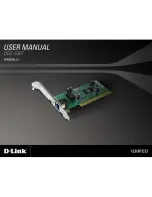
26
•
Fieldbus coupler 750-342
Data exchange
Modular I/O System
ETHERNET TCP/IP
3.1.4.3
Process data architecture for MODBUS/TCP
For some bus modules or their variations the process data architecture is spe-
cific for the fieldbus coupler used.
In the case of the ETHERNET coupler with MODBUS/TCP, the control/status
byte is always masked in addition to the data bytes. This is required for the
two-directional data exchange of the bus module with the higher-ranking con-
trol system. The control byte is transmitted from the control system to the
module and the status byte from the module to the control system. This allows,
for example, the display of overshooting or undershooting of the area.
Attention
Please refer to the respective bus module description in Chapter 4 "I/O modu-
les" for the specific architecture of the control/status byte.
The following shows the representation of some selected modules in the proc-
ess image.
In the examples, the order in which the modules are physically arranged in the
node reflects the order in the image table starting with register address 0x0000.
If the module is at any other position in the fieldbus node, the process data of
all previous byte-wise oriented modules has to be taken into account, resulting
in a basic register address for the module in the process image. The mentioned
offset will be added to this basic address for addressing its process data words.
If an analog input or output module is added, it takes up 2 x 16 Bit input of
output data. Therefore the first available digital point would be at word 2
keeping in mind that all process image addressing starts at WORD 0.
With the ETHERNET fieldbus coupler with MODBUS/TCP TCP, the process
image is word aligned (word-alignment) and the control/status byte is always a
low byte.
















































